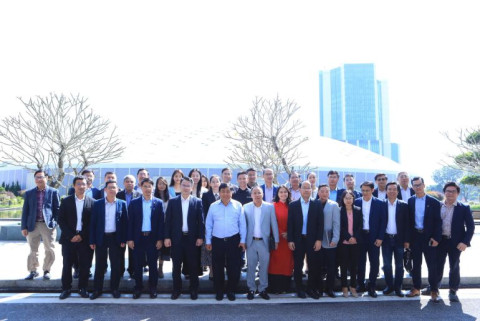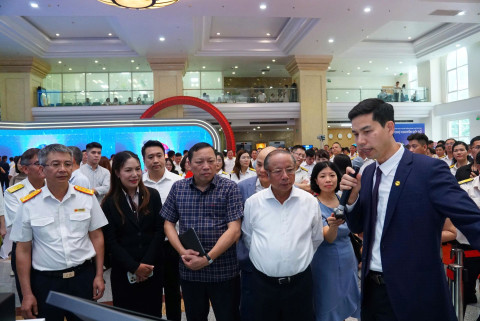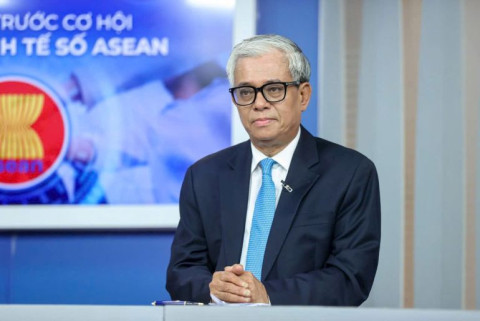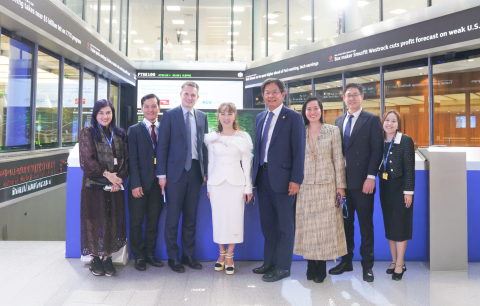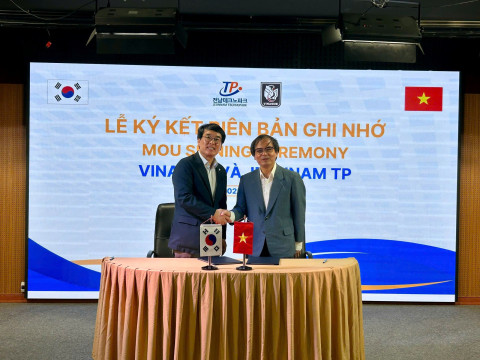Investment opportunities in real estate closely tied to infrastructure investment
- 120
- Business
- 10:56 01/07/2024
DNHN - Currently, increasing public investment, particularly in infrastructure projects, is a strategic priority that the Vietnamese government is actively promoting for 2024. This is seen as a major opportunity for the real estate market.
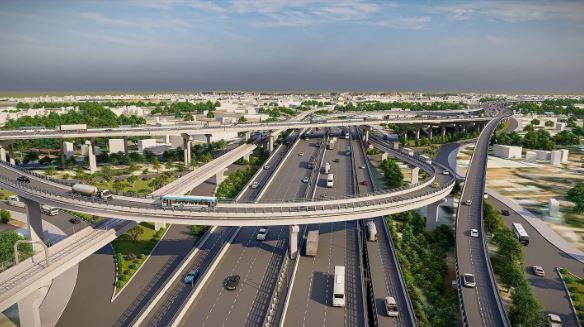
Public investment plan of 657 trillion VND for 2024
At the 9th session of the State Committee for National Key Projects in the Transport Sector, Prime Minister Pham Minh Chinh emphasized that public investment plays an important role in leading and activating all social resources for development investment. In 2024, the country will allocate VND 657,000 billion for public investment, mainly in transportation infrastructure, with a goal to achieve a disbursement rate of at least 95%.
Along with the effective promotion of growth momentum, the focus on public investment disbursement, with transportation projects being put into operation, will help reduce logistics costs for businesses, lower input costs, increase the competitiveness of products, businesses, and the economy; and create new development spaces as infrastructure development opens up new areas for growth, especially in industrial development, urban areas, and services.
As of mid-June, the implementation of key projects has achieved very encouraging results.
For example, the Long Thanh International Airport has taken a clear shape. Recently, the project mobilized nearly USD 2 billion in domestic funds; issues related to capital, land, and materials have been resolved. Other projects, such as Terminal 3 of Tan Son Nhat International Airport and the expansion of Terminal 2 at Noi Bai, are being actively implemented.
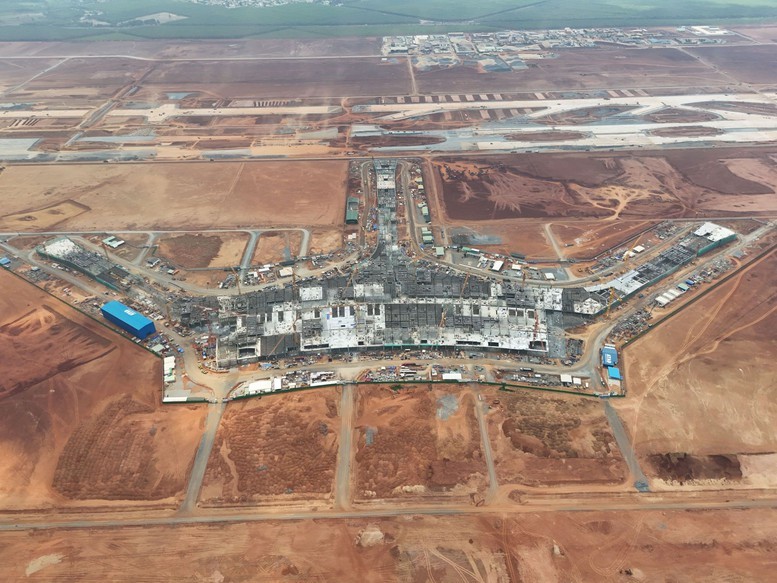
Currently, the country has 34 major projects and 86 nationally significant component projects, key to the transportation sector, across 46 provinces and centrally administered cities. These include 5 railway projects, 2 airport projects, and the remaining are road projects, mainly expressways and ring roads around the capital Hanoi and the ring road in Ho Chi Minh City.
Real estate opportunities
According to Savills World Research's Impacts report, Vietnam increased infrastructure spending from 2.5% of GDP in 2016 to 6% in 2020, committing to a comprehensive national transportation network by 2045. This network will include 5,000 km of highways, a deep-water port, and two high-speed rail lines, with Long Thanh International Airport near Ho Chi Minh City serving 100 million passengers annually by 2035.
The research also emphasizes that many projects have driven real estate development in Vietnam's increasingly important tourism sector. For example, the 32-story Hilton Saigon hotel opened at the end of 2023. It is expected that there will be more high-end hotel and retail services in the city and surrounding areas once the airport becomes operational.

Additional cargo handling capacity will also make life easier for manufacturing and logistics businesses, leading to a demand for industrial and warehouse space.
According to Mr. Paul Tostevin, Director of Savills World Research, infrastructure projects can provide public benefits or improve economic activity, or achieve both goals simultaneously.
"Infrastructure projects create jobs - both during the initial construction phase and for businesses that emerge thereafter. These projects also increase mobility, travel capabilities, and access to services. Meanwhile, improving the power grid and digital connectivity facilitates business expansion," said Mr. Paul.
Infrastructure investment can also help countries achieve their climate goals through green energy projects, upgrading existing infrastructure to reduce carbon emissions, and carbon capture and storage facilities, among many other projects.
Opportunities for all segments
“The connection between efforts to disburse investment in infrastructure and real estate development is very close. Economic centers that are connected will attract skilled labor, create good business opportunities, and foster social growth. New port facilities create export opportunities. Ultra-fast broadband promotes the expansion of the digital economy,” the expert further analyzed.
New infrastructure often attracts new businesses and workers, forming clusters. Where infrastructure is developed, offices, warehouses, shops, and residential areas often follow.
According to Mr. Paul Tostevin, right from the early stages, a well-funded transport or energy project will provide reassurance to developers and real estate investors, allowing them to proceed with their plans. For those currently renting or potentially renting offices, retail, or industrial real estate, infrastructure investment reflects confidence in their area.
Additionally, the Director of Savills World Research also pointed out the risks surrounding infrastructure investment, mainly related to the long-term nature of each project. Therefore, political and economic conditions can change significantly over five or ten years, causing projects to be temporarily shelved, downgraded, or face financial issues.
Nghe Nhan
Related news
#Real estate
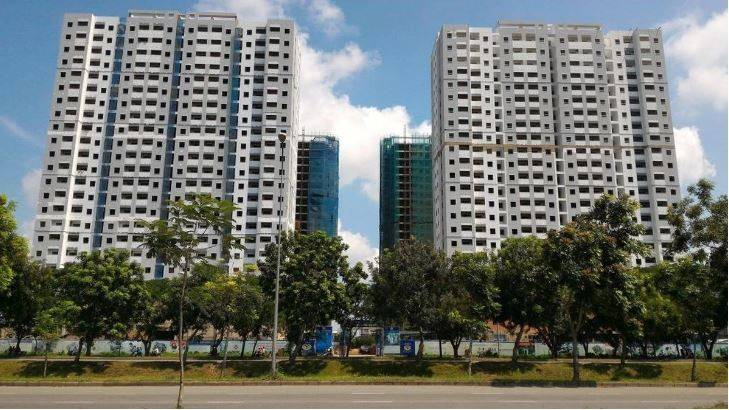
Who are the two mysterious female tycoons holding 52 million HQC shares?
Two female tycoons have emerged as major shareholders of Hoang Quan Consulting-Trading-Service Real Estate Corporation (HQC), holding a combined 52 million shares, with investments totaling hundreds of billions of VND.
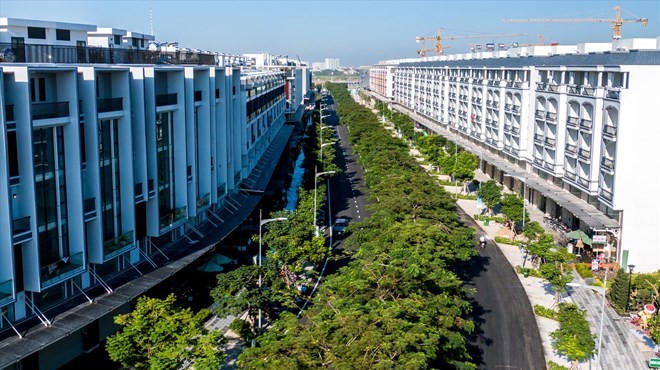
More than 1,000 new real estate businesses established in Ho Chi Minh City, transactions grow
In the first nine months of 2024, Ho Chi Minh City's real estate market witnessed the establishment of over 1,000 new businesses and recorded 1,600 property transactions, signaling a positive recovery trend.
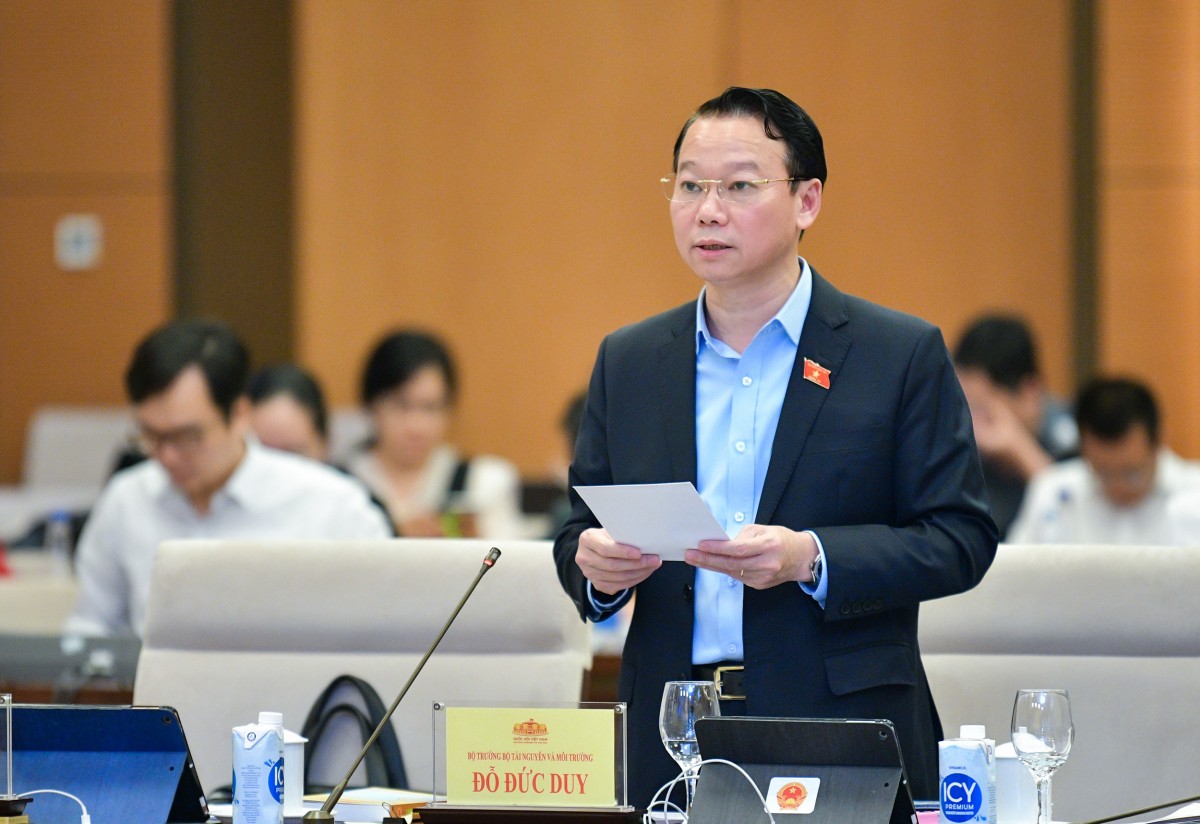
Pilot project for commercial housing to expand land use rights
The National Assembly Standing Committee has submitted a pilot project on commercial housing through land use rights agreements for National Assembly consideration, aiming to unlock resources.

Assoc. Prof. Dr. Tran Kim Chung: The 1987 Land Law laid the foundation for the real estate market
Assoc. Prof. Dr. Tran Kim Chung, former Deputy Director of the Central Institute for Economic Management, states that the 1987 Land Law laid the groundwork for the development of the real estate market.
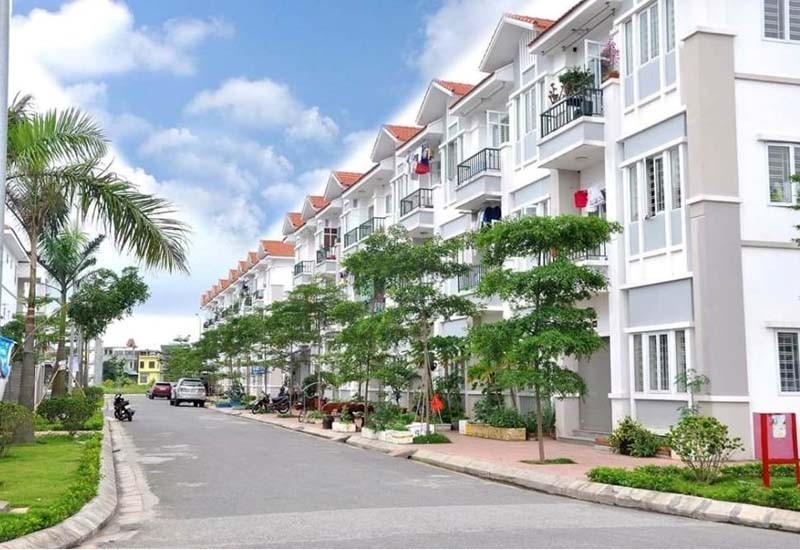
Draft resolution on commercial housing: A new opportunity for the real estate market
Amid the challenges facing Vietnam’s real estate market, the addition of a Draft Resolution piloting commercial housing projects brings renewed hope to citizens and promises to boost economic development.
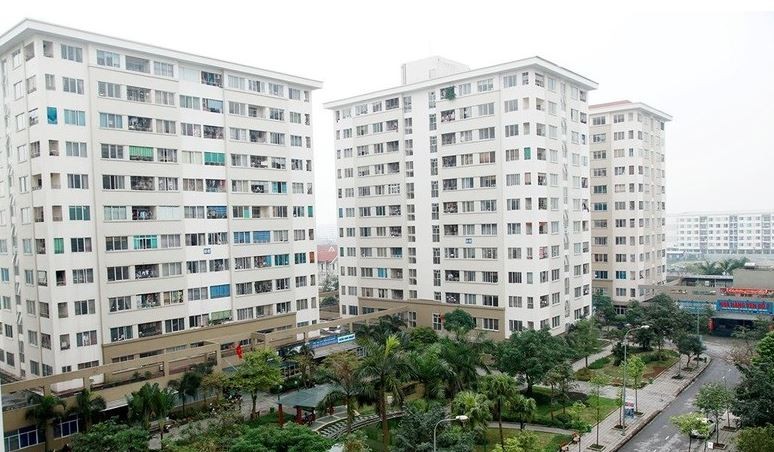
Social housing loan package increased to VND 145 trillion
The social housing loan package, originally valued at VND 120 trillion, has been raised to VND 145 trillion with the participation of nine banks, drawing attention from businesses and consumers.
Đọc thêm Business
From New Year messages of World Leaders to the “new rules” of the Global economy in 2026
At a pivotal moment of transition, New Year messages from capitals such as Hanoi, Beijing, Washington and Paris reflect distinct priorities and strategic visions.
Connecting Leaders, Shaping the Future: Strategic Leadership Planning Meeting – CorporateConnections Hanoi A
"Your network is your most powerful flowing asset. It generates value, multiplies opportunities, and accelerates your influence across borders."
Innovative ESG enterprise: Trạm Xe Việt startup proposes solutions to build a green mobility ecosystem
As Vietnam commits to achieving Net Zero by 2050 and tightens emissions standards, the transportation sector faces unprecedented pressure to transform.
Deputy Prime Minister Nguyễn Chí Dũng: “The country’s major challenges weigh heavily on my mind — and we must resolve them together.
On the morning of November 26, 2025, Deputy Prime Minister Nguyễn Chí Dũng chaired a high-level working session at the National Innovation Center (NIC) in Hòa Lạc.
Unitsky String Technologies signs cooperation agreements with three Vietnamese partners, opening a new direction for smart mobility and sustainable development
The signing ceremony took place in Minsk, Belarus, on November 28, 2025.
Before the D‑day to abolish flat‑rate tax: Fear of technology and costs leave small traders struggling to adapt
From 1 January 2026 the flat‑rate tax regime will be abolished. Small business households will be required to declare tax based on actual revenue. MISA supports the transition with technology to help micro‑merchants adapt smoothly and transparently.
Vietnamese enterprises at a crossroads: the impact of a potential US–China deal
As the world closely monitors every shift in US-China relations, emerging signals of a strategic agreement between the two global powers are raising hopes for global economic stability.
HDBank: Impressive profit growth, leading in profitability and advancing international integration
Ho Chi Minh City Development Joint Stock Commercial Bank (HDBank, stock code HDB) announced its consolidated profit before tax for the first 9 months of 2025 reached VND 14,803 billion, marking a 17% increase year-on-year (YoY).
TNI King Coffee sued for over VND 5 Billion in unpaid debts
On October 21, 2025, the People’s Court of District 10 in Ho Chi Minh City officially accepted a civil lawsuit concerning a commercial contract dispute between TKT Vietnam Plastic Packaging Joint Stock Company and TNI King Coffee Co., Ltd.
VINASME and Jeonnam Technopark Sign MOU on technology cooperation, human resource training, and trade promotion
On October 15, 2025, in Hanoi, VINASME and Jeonnam Technopark (Korea) signed an MOU to promote trade, advance technology transfer, and develop human resources between enterprises of both nations.





